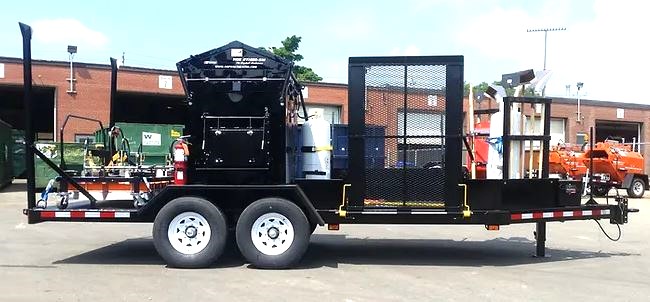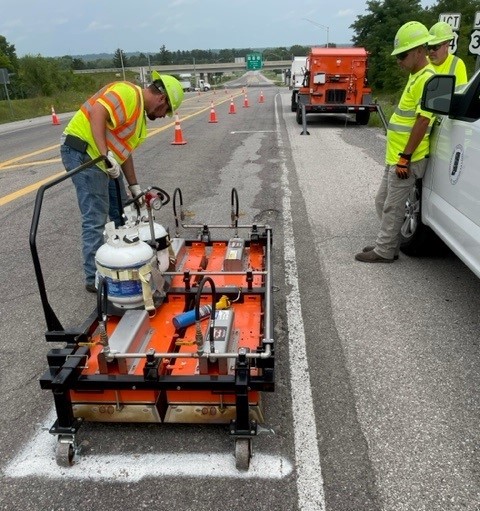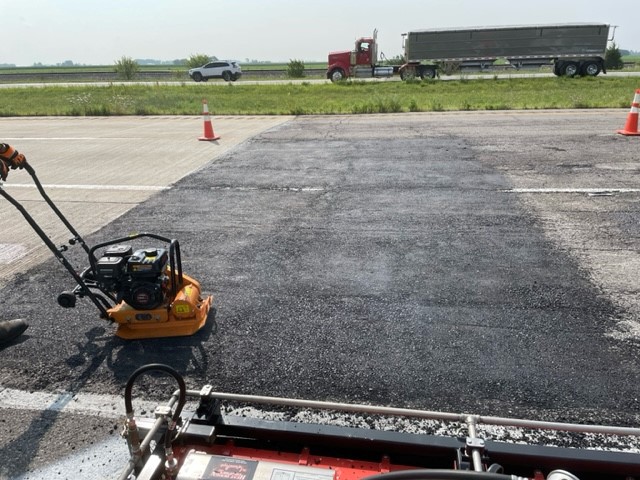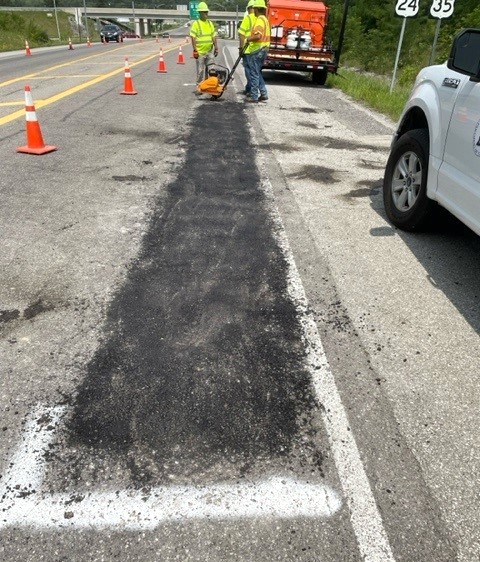November 2023
INDOT is testing the use of an infrared pavement heating system to smooth bumps in hot-mix asphalt (HMA) pavements. The system consists of a 16-foot-long self-contained maintenance trailer to transport the 6-by-3-foot asphalt heater, infrared heating array, compaction equipment, and hand tools. The unit is equipped with a heater deck and 2-ton asphalt reclaimer. It has capacity for four 100-pound liquid propane cylinders to keep the deck and reclaimer going for 15 to 20 hours.
INDOT’s LaPorte District is working with INDOT’s Research & Development (R&D) Division to test the system, which is expected to be rolled out statewide — perhaps as soon as next year.
Thermal changes cause bumps in asphalt road surfaces. Infrared technology could provide a superior road-bump repair compared with the current practice of grinding off the bumps. The infrared system is expected to increase the efficiency over needing multiple vehicles and systems to convey HMA material and compaction equipment separately.
The trailer heats up and softens localized areas of the roadway surface asphalt, enabling the area to be reworked and compacted, thereby fixing any surface deterioration. The heaters can soften the top 2½ inches of asphalt to the original mixing temperatures in five to 10 minutes. This process enables crews to smooth out areas of localized asphalt roughness. The biggest advantage of infrared heating is that the pavement patch is sealed to the surrounding asphalt, minimizing water intrusion into the surface and reducing freeze-thaw damage.
“Using this methodology for bump mitigation is expected to improve the road smoothness and decrease user costs,” said Tim Wells, R&D’s administrator for the research project. “Also, bumps are mitigated in a nondestructive manner, which should increase pavement life.”
LaPorte District Highway Maintenance Director Justin Bednar has supervised the 2023 testing.
“Besides treating bumps, the system is designed to repair surface cracks, bad joints, and potholes, so we have been testing the unit for those maintenance issues, too,” said Bednar. “A big focus has been on wheel paths that have been rutted from heavy truck traffic.”
In August, LaPorte Subdistrict crews used the heating system on U.S. 35/Indiana Avenue in LaPorte. Employee feedback indicated that the unit was easy to use, helped with smoothing out rough surfaces and patchy areas, and produced a consistent finished product.
Later, INDOT used the trailer on larger areas along State Road 25 south of Logansport, including a 15-foot swath across all northbound lanes. INDOT also used the machine on nearby State Road 329. Crews immediately noticed a time savings to this method compared with heating, then breaking up, cold mix in the road. Pavement that can be economically repaired in a shorter time span and with decreased rerouted traffic promotes a safer environment for workers and motorists.
The infrared trailer has also been tested in the Gary Subdistrict on U.S. 12 between Taft Street and Taft Place.
The infrared heaters can also preheat asphalt for cold-weather paving, something that the district will also test.
R&D’s Wells said pavement smoothness will be measured — before and after — to objectively document performance. Long-term performance will be monitored at intervals. A comparison between the infrared heating and the current practice of grinding will be performed to gauge cost, material issues, and placement issues. Laboratory testing to determine potential asphalt aging from infrared heating will also be examined.




